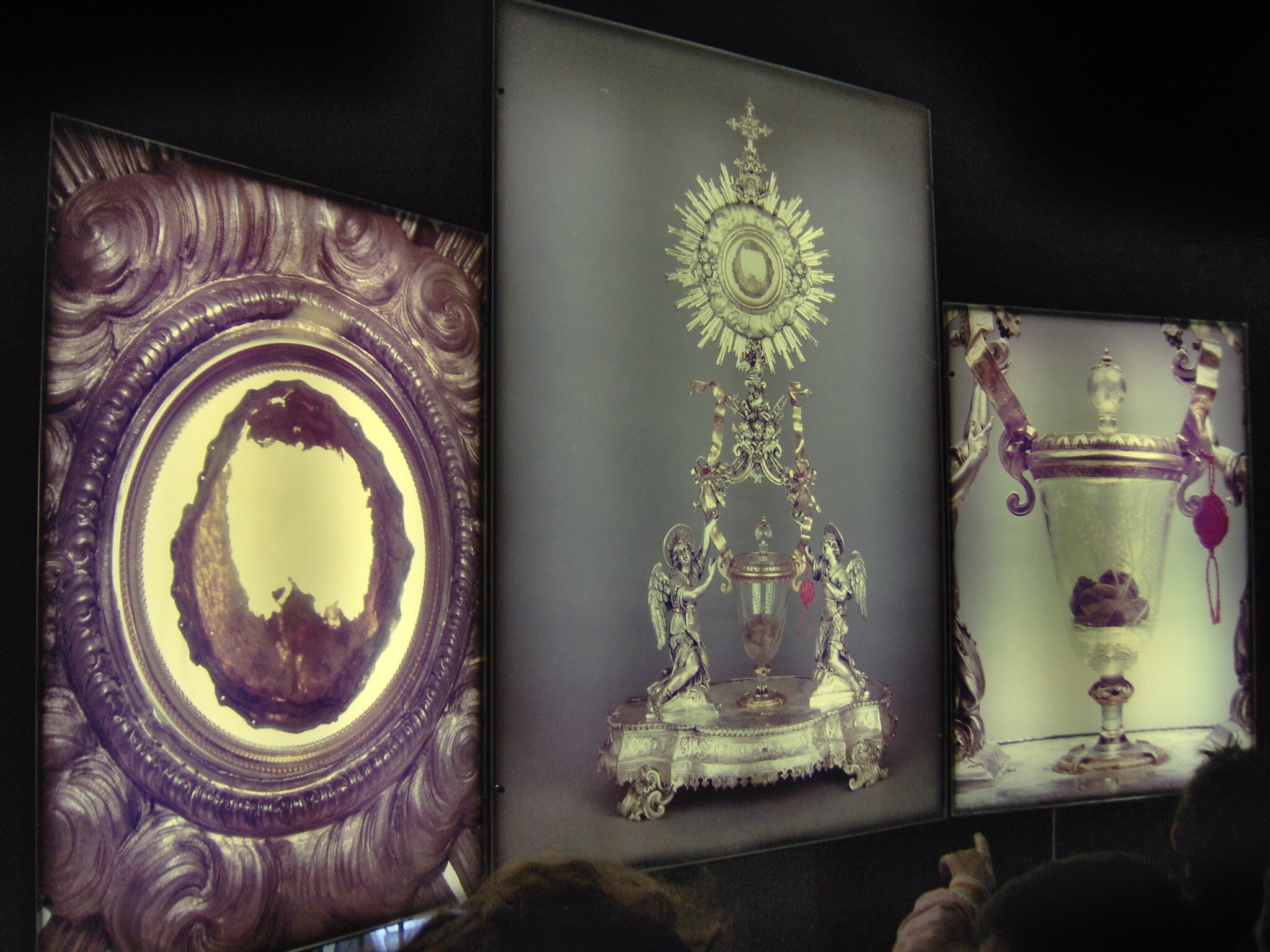Eucharistic Miracles: The Miracle of Lanciano, 750 AD
Last week, I introduced this new series of articles on the Eucharistic Miracles, occasions where Christ breaks through the veil of the ordinary to wake us up to the reality of his presence in the Eucharist. It seems appropriate that we begin with the first, and most likely greatest, of these miracles, which took place in a Basilian monastery dedicated to St. Longinus in Lanciano, Italy, around the year 750.
The account says a priest was experiencing doubts in his faith in the Eucharist. While he was striving to better understand the world and the sciences, he continued to struggle in faith that what he was proclaiming as he celebrated Mass was even possible. As he was celebrating Mass one day, and I’m sure it was with these doubts firmly in his mind, during the words of consecration, he saw the bread and wine transformed into actual human flesh and blood. Those in attendance, and those who saw his amazement, spread the news throughout the monastery and surrounding area. Shortly after this happened, the blood on the host coagulated into five globules, which onlookers connected to the five wounds of Jesus, which the flesh remained the same. The matter was investigated and proclaimed a miracle, and the host was placed in a special vessel, which is still on display in Lanciano today.
The fame of this miracle spread throughout the world over the centuries, but in the 20th century, a time when perhaps we needed it most, even more was revealed. In 1970, Pope Paul VI commissioned a series of studies of the miraculous host of Lanciano. Drs. Ruggero Bertelli and Odoardo Linoli, both doctors of human anatomy and histology, performed separate investigations, which corroborated each other’s findings. Further studies were taken up by the World Health Organization in 1973 and again by Dr. Bertelli in 1981, both of which confirmed the findings and discovered even more information.
So what did these studies find? The results are truly stunning:
The flesh has the same structure as heart tissue (myocardium) and the membrane of tissue lining cardiac cavities (endocardium). The flesh was also discovered as being fresh, as opposed to 1,200 years old, with no trace of preservatives.
The globules of blood were also of human origin and determined to be of type AB. Further, while blood taken from a cadaver would deteriorate quickly, these samples continued to maintain the same properties of fresh blood.
It seems appropriate that this incredible Eucharistic Miracle occurred in a monastery dedicated to St. Longinus, who tradition states was the name of the Roman soldier who thrust the spear into the side of Christ on the Cross. As he beheld the water and blood flow from the site of Jesus, and the earth trembled at the moment of death, he proclaimed, “ Truly, this was the Son of God.” The miracle of Lanciano has inspired the same sentiment in the minds and hearts of people for centuries, and perhaps it can do the same for us today.
Stay tuned next week for the story of another Eucharistic Miracle!



